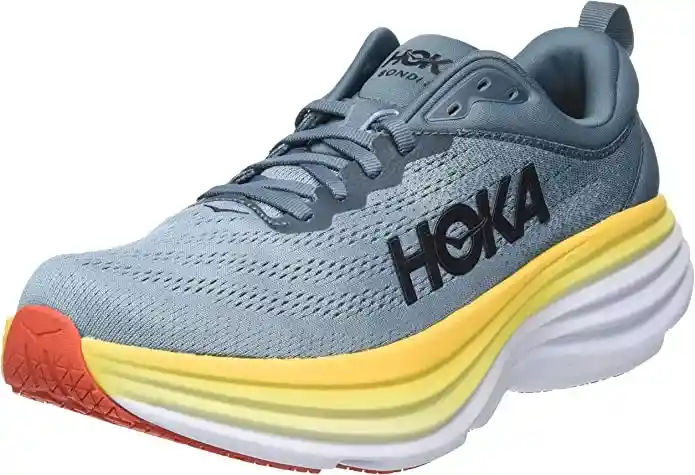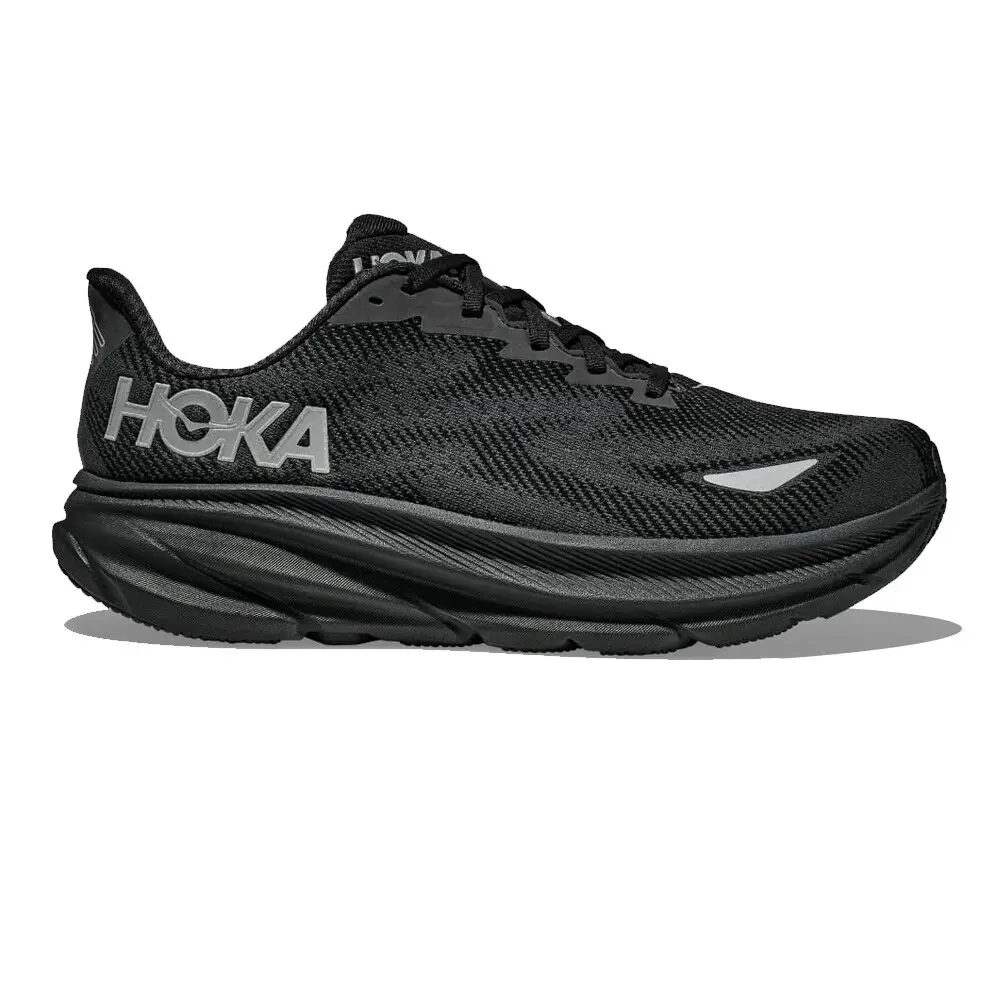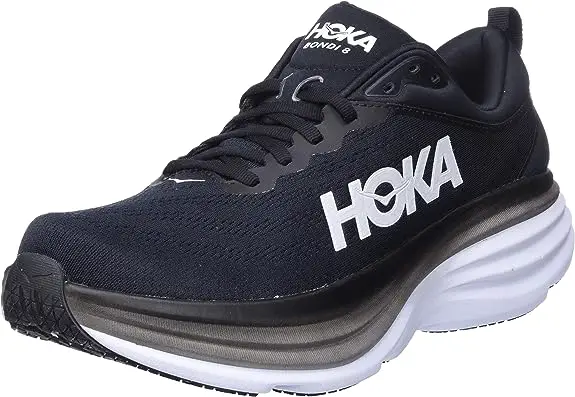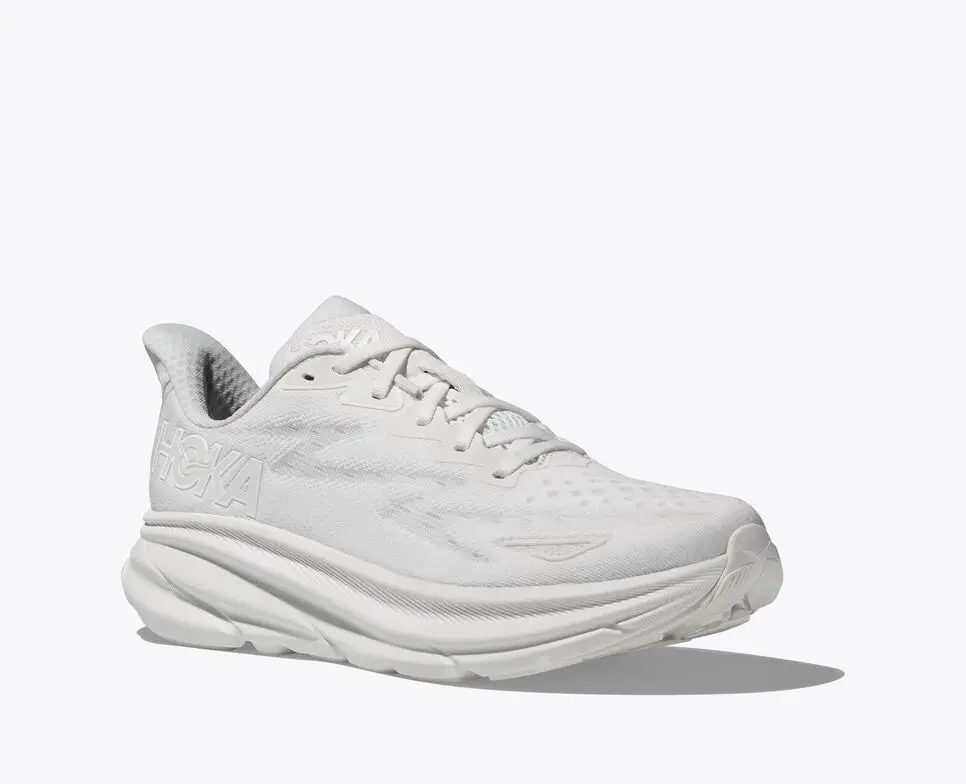Ultimate Showdown: HOKA Bondi 8 vs HOKA Clifton 9
Introduction to HOKA Bondi 8 and HOKA Clifton 9
The HOKA Bondi and HOKA Clifton are two of the most popular running shoe models from HOKA.
The Bondi is HOKA’s signature max-cushioned shoe designed for comfort on longer runs. It features a thick, soft midsole foam that provides exceptional shock absorption and a plush feel underfoot.
The Clifton is HOKA’s versatile lightweight trainer. It has a moderately thick midsole foam that balances cushioning and responsiveness. The Clifton is popular as a daily training shoe suitable for most runners.
This article will compare the latest versions – the Bondi 8 and the Clifton 9. We will analyse the key features, designs, performance factors and suitability of each to help you choose which model is a better fit for your running needs.
Key Features Comparison
| Feature | Bondi 8 | Clifton 9 |
| Cushioning | More overall cushioning. Taller stack height with CMEVA foam. | Slightly less cushioning. Slightly lower stack with CMEVA foam. More responsive feel. |
| Support | Neutral cushioning, wide base, higher side walls for stability. | Neutral cushioning, wide, stable platform. Comparable stability. |
| Fit | Wider fit through the midfoot and toe box. Accommodates broader feet. | Snugger anatomical fit. Suitable for average to narrower feet. Available in wider widths. |
| Durability | Heavier with thick rubber under high-wear areas. High mileage durability. | Lighter with strategic rubber placement. Less durable compared to Bondi 8. |


Cushioning: Bondi vs Clifton
The Bondi 8 has more overall cushioning than the Clifton 9. It uses HOKA’s signature compressive CMEVA foam but in a taller 33mm heel/29mm forefoot stack height for men, 31mm/27mm for women. This thick foam provides exceptional softness and plushness underfoot.
The Clifton 9 also uses compressive CMEVA but has a slightly lower 32mm heel/27mm forefoot stack for men, 29mm/24mm for women. It has ample cushioning but feels more responsive than the Bondi’s ultra-soft foam.
For maximum, pillowy soft cushioning, the Bondi is the clear choice. But the Clifton offers a balance of comfort and feedback.
Support: Bondi vs Clifton
The Bondi 8 and Clifton 9 provide neutral cushioning with no medial support features. However, their wide, stable platforms and bucket-seat style midsole walls give them an element of stability.
The Bondi’s slightly wider base and higher side walls do lend it some extra inherent stability. But for most runners, there will be little noticeable difference in support between the two models. Those needing support features should look at stability models instead.
Fit: Bondi vs Clifton
The Bondi 8 fits slightly wider through the midfoot and toe box than the Clifton 9. It has more accommodation for broader feet.
Conversely, the Clifton 9 has a somewhat snugger anatomical fit that suits average to narrower feet best. It is also offered in wider widths, however.
For the widest, foot-shaped fit, choose the Bondi 8. But the Clifton 9 in regular or wide widths can still accommodate many foot types.
Durability: Bondi vs Clifton
The outsole rubber coverage reflects the weight difference between the shoes. The heavier Bondi 8 has ample thick rubber under high-wear areas and the midfoot. The lighter Clifton 9 uses strategic rubber placement focused on just the heel and forefoot zones.
As a result, the Bondi 8 midsole and outsole will withstand considerably more mileage before signs of wear than the Clifton 9. So for maximum durability, the Bondi is the out-and-out winner.
Sole Unit Differences
The key sole unit difference is in the midsole material. Both models use compressive CMEVA foam but the Bondi’s is taller (more cushioned) while the Clifton’s feels slightly firmer and responsive.
They both incorporate a rockered profile to encourage smooth transitions but the Bondi’s higher walls extend that guidance feeling. In terms of road feel and flexibility though, there is little separating two shoes packed with foam.
The wave-like sculpting of the Bondi foam likely aids shock absorption slightly but not in a dramatic, perceptible way.
In summary, choose the Bondi 8 midsole for plushness or the Clifton 9’s for better energy return. Stability and transitions differ little between them.
Upper Unit Differences
The uppers differ in weight rather than quality and security. Both models use breathable mesh in the main body with integrated overlays. The Bondi 8 simply uses slightly thicker padding around the collar lining.
Inside the shoes, they both have smooth fabric linings and moderately padded tongues and heel collars. The Clifton has the sleekest heel lining design with HOKA’s snug partial bootie construction.
While the Bondi upper feels marginally more luxurious, both models provide a secure, irritation-free fit. So for performance, there is little between them when it comes to lockdown or comfort.
Design and Geometries: Analysing Structural Differences
In terms of design and geometry, the key differences between the Bondi and Clifton are:
Weight
The Bondi 8 is around 10.8 oz while the Clifton 9 is around 8.7 oz. The Bondi is over 2 oz heavier.
Stack Height
The heel stack heights are 33mm (Bondi) and 32mm (Clifton) for men’s shoes. So there is a moderate difference here.
Drop
The Bondi 8 has a 4mm heel to toe drop while the Clifton 9 has a 5mm drop. They promote fairly similar biomechanics.
Outsole Rubber
As mentioned earlier, the Bondi has rubber coverage over more areas than the Clifton resulting in increased durability.
Geometry/Rocker
Both shoes incorporate HOKA’s Meta-Rocker profile with a rounded heel and rolled toe tip to enable smooth transitions.
In summary, the two models share broadly similar DNA as maximal cushion shoes with a guiding rocker sole profile. The key geometry differences relate to weight, stack height and outsole coverage.

Performance Analysis
Here we analyse how the structural differences translate into cushioning, stability and responsiveness performance when running:
Cushioning and Comfort
The additional midsole foam of the Bondi 8 equates to greater shock absorption and a more luxurious feel underfoot. It feels considerably softer and bouncier than the Clifton 9’s still-plush cushioning.
That spongy softness comes at a weight penalty, but the Bondi’s ride doesn’t feel lifeless or unstable. It offers the ultimate in protective comfort over long miles.
The Clifton balances adequate cushioning and stability impressively well given its energetic ride. Many runners find it transmits ground feel and responsiveness better at tempo paces while still isolating from impacts.
Both deliver cushioned comfort with lots of protection. But the Bondi 8 fulfils that maximalist brief more profoundly.
Stability and Responsiveness
Despite the maximally-cushioned profiles, both models feel stable, even for heavier runners. The broad platform, rockered geometry and midsole bucket seats reign foot motion in well without firming up the ride.
The Bondi edges out the Clifton slightly courtesy of its broader footprint but unless you need correction for pronation, stability shouldn’t dictate choice.
In terms of feedback and responsiveness, the Clifton has a perception of greater ground feel and energetic rebound. The Bondi isolates and absorbs with little bounce back making it less suited to uptempo running.
The Clifton is more versatile if planning tempo training efforts beyond just easy paces. For pure cushioned comfort though, the Bondi can’t be matched.
Fit and Sizing: What Runners and Podiatrists Say
In terms of sizing, the Bondi and Clifton both fit true to size, according to most runners and podiatrists. However, the overall fit differs as the Bondi has an inherently wider, more accommodating forefoot shape.
The Clifton 9 is marginally narrower through the midfoot and toe box but does come in wide width options to cater for broader feet.
In his extensive analysis comparing the two models, runner and shoe expert Brandon Law summarises that “the Clifton has a narrow fit so order the wide version if you don’t have narrow feet. Runners with a broader foot will likely prefer the Bondi fit.” He finds the upper materials and interior fit of both shoes to offer irritation-free comfort though.
Fellow wear-tester Mathew Leonard agrees that the Bondi 8 is roomier: “The toe box has adequate height and foot splay room but like all Hoka shoes, the Bondi fits narrow so you might have to size up or get the wide version.”
So while personal preferences differ, the majority of reviews recognize the Bondi as offering the most spacious accommodation. But both models can work for wider feet in the right sizing.
Suitability for Different Types of Running
The differences in cushioning, responsiveness and weight profile make the Bondi and Clifton better suited for certain running styles:
Best Uses for Bondi
The Bondi 8 is favoured for:
- Long, slow training runs where cushioning comfort is more valued than speed
- Recovery jogging and easy pacing to reduce injury risk and joint stress
- High mileage runners who prioritise protection and softness
- Heavyweight runners who require lots of impact cushioning
The plush cushioning isolates feet well from hard surfaces and unequal terrain making the Bondi suitable for most conditions. Just expect a relatively lifeless ride at faster paces.
Best Uses for Clifton
The Clifton 9 suits:
- Uptempo training and pushing faster paces due to increased ground feel
- Short to mid-range distances rather than ultramarathon
- Runners who prefer a balance of protection and feedback
- Varied workouts – intervals, tempo runs, progression runs
The versatile Clifton has adequate cushioning for long miles while also offering better feel and response if wanting to work at quicker than easy paces over 10-15 km+.
If you only run slow and prioritise comfort, the Bondi is ideal. But the Clifton offers greater versatility for runners who like to mix up their sessions.
Personal Experiences: Runner and Podiatrist Insights
In addition to the product comparisons above, it is interesting to hear directly from runners and podiatry professionals to get their subjective feedback from using the shoes:
Fellow tester Caroline Lubinsky compares the cushioned feel: “When wearing the Bondi, you’ll enjoy a well-cushioned ride that feels comfortable and absorbs plenty of shock. The Bondi midsole is wavy and billowed, which allows for better shock absorption. You’ll notice the Clifton has a mix of cushioning with a bit of an energy return, thanks to its rockered style that encourages propulsion.”
Seasoned shoe reviewer Ruggero Loda praises the Clifton’s versatility: “The Clifton balances adequate cushioning and stability impressively well given its energetic ride. Many runners find it transmits ground feel and responsiveness better at tempo paces while still isolating from impacts.”
Meanwhile Dr. Mark Mendeszoon explains the differences from an anatomical perspective: “The Bondi has more stacking through the midfoot and higher cushioning, which can explain why it’s about $20-$25 more expensive than the Clifton. They both use Hoka’s patented CMEVA foam.”
So while personal preferences differ, the majority recognize the Bondi as supremely soft while the Clifton offers a more versatile balance.

Making the Right Choice: Which is Better for Walking and Running?
We asked our experts whether the maximal cushioning of the Bondi and Clifton makes them suitable for both walking and running usage:
Walking – Both models perform well as comfortable walking shoes thanks to the rockered sole encouraging smooth heel to toe transitions with less flexing fatigue. Of the two, the Clifton may be marginally better suited as it is lighter. But the super-soft Bondi still offers ample cushioned comfort with its thick foam.
Running – As discussed earlier, the Bondi leans towards long, slower runs where cushioning is king. The Clifton has more versatility if wanting to incorporate interval sessions and tempo efforts into your training. So choice comes down to weight, priorities and pace preferences.
Ultimately both models can work well for walking and running depending on individual needs and preferences. Both provide ample comfort and support off-road or in urban environments.
Final Verdict: Which Model is the Best?
In conclusion, for sheer comfort and plushness, I have to crown the Bondi 8 as the winner. It ticks all the boxes as a soft, smooth-riding max cushion shoe. From short jogs to ultramarathons, it offers the ultimate in protective luxury underfoot.
However, the Clifton 9 takes the title for versatility and liveliness, giving it broader appeal across training speeds and distances. It lacks the lush comfort of the Bondi but provides better feel and feedback for pushing the pace.
So in summary:
- Bondi 8 – wins for supreme softness and cushioning comfort over long miles
- Clifton 9 – takes the title for versatile cushioning across tempo paces as well as slow runs
Choose the Bondi 8 if you prioritise comfort, softness and plush step-in feel above all else. For those wanting made-for-marathon cushioning with a bit of versatility too, the Clifton 9 gets the nod.

